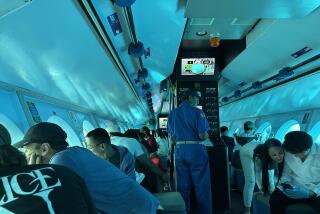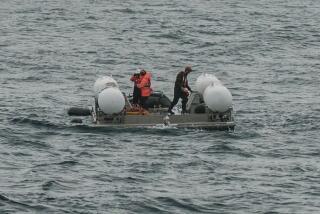Probers Say Sub Could Have Avoided Fatal Tug Accident
- Share via
A Navy submarine that accidentally sank a tugboat just outside Los Angeles Harbor last spring probably would have avoided the disaster--in which the tug’s pilot was killed--had the crew used its “active” sonar before surfacing, a spokesman for the National Transportation Safety Board said Wednesday.
The board, which recently completed its investigation of the incident, found that the submarine’s crew had activated only its “passive” sonar, which offers a murkier picture of objects at the surface of the water.
Navy submarines often use only the passive sonar because enemy craft can trace them more easily when they use the “active” system.
But NTSB spokesman Alan Pollock said the board found that the crew of the submarine Houston had little reason to be concerned that the sonar signal might be traced.
“They were in costal waters,” he noted. “In this particular accident, we felt, there was no need for the submarine to be in some sort of secret mode.”
In the June 14, 1989, incident, the submarine surfaced and snagged one of two steel towlines that connected the tugboat Barcona to two barges it was pulling. The Santa Catalina Island-bound tug was dragged underwater and pilot Bryan Ballanger killed.
The submarine crew later said in a Navy report that it had picked up the tugboat on its passive sonar, but mistook the barges for sailboats because they made little noise.
Although the board is still preparing its official report, Pollock said it would recommend the use of sonar devices in coastal waters.
The NTSB report will also recommend mandatory emergency-release mechanisms for tugboat towlines and suggest that tugs keep certain doors closed when at sea, he said.
“If they had had an emergency towline release, they may have been able to free themselves,” Pollock said.
More to Read
Sign up for Essential California
The most important California stories and recommendations in your inbox every morning.
You may occasionally receive promotional content from the Los Angeles Times.













